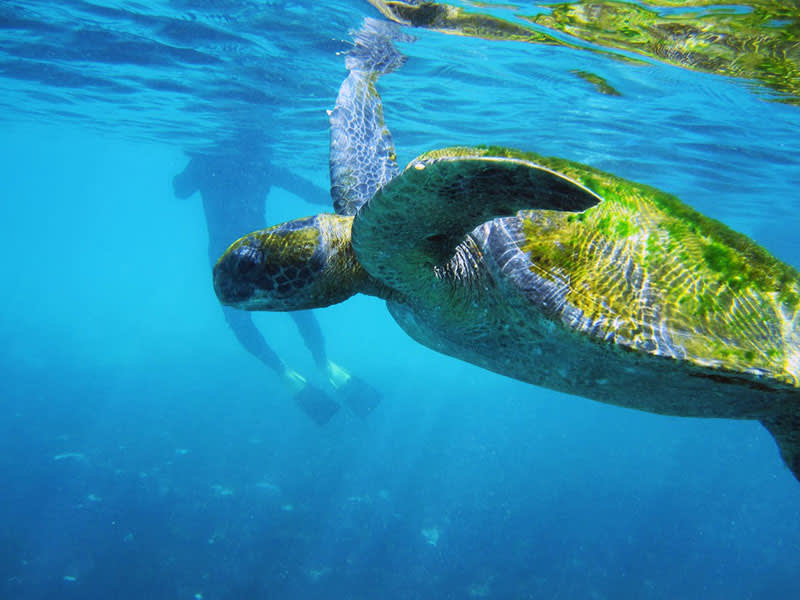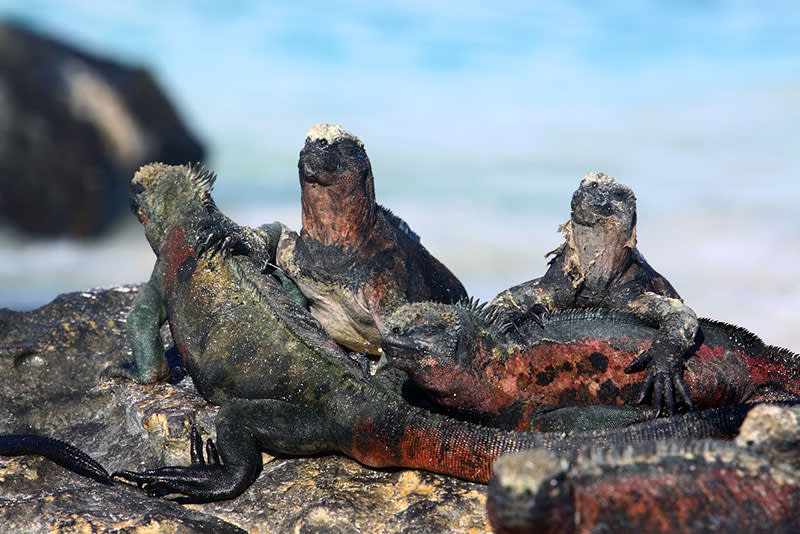The spectacular Galapagos Islands have been described as a “living museum and showcase of evolution” by UNESCO, which has added the islands to its list of world heritage sites.
Comprised of 19 volcanic islands, the extreme isolation of the Galapagos has led to the development of unique animal life including the land iguana, giant tortoise and a variety of finch species. The marine reserve surrounding the island is a melting pot of species, and those who take a Galapagos cruise will be rewarded with sea turtles, sea lions, and a multitude of fish.

Best Landing Sites in the Galapagos Islands
Having decided to take a Galapagos expedition with Quark, your next choice is where to begin your exploration. Galapagos Expedition: Darwin’s Playground, Far West departs from Isla Baltra near the center of the islands, while Galapagos Expedition: Darwin’s Playground, Central & North departs San Cristobal, the easternmost island in the archipelago.
Each provides a unique selection of landing sites offering incredible adventures, flora and fauna, photographic opportunities and experiences. What do you want to see, feel and do in the Galapagos Islands? Check out these top landing sites and imagine the possibilities:
Galapagos Expedition: Darwin’s Playground, Far West
While on Baltra, visit the one of the island’s oldest whaling camps at Whaler’s Bay, or discover several species of the legendary boobies at Eden Inlet.
At nearby Isabela Island, take to the water and swim with sea turtles, penguins and myriad other marine species. Fernandina Island is the youngest and most volcanically active, and offers the explorer a chance to see the lava fields of Punta Espinosa.

Photo credit: Ecuador’s Ministry of Tourism
On Santiago Island, begin your exploration on the white coral sand beach, before strolling over lava that formed the island less than 100 years ago. Cool off with some snorkeling, and maybe even a swim with the speedy Galapagos penguin.

Photo credit: Ecuador’s Ministry of Tourism
Heed the name of Dragon Hill on Santa Cruz Island; it’s named for the area’s large land iguanas. Visit the Charles Darwin Research Station and learn about the important work being conducted to protect the Galapagos ecosystem.
Española Island is the southernmost in the chain, and its relative isolation has resulted in an abundance of unusual wildlife, but has also led to the evolution of species only found here.
Follow Darwin’s Footsteps with Galapagos Expedition: Darwin’s Playground, Central & North
San Cristobal Island is home to the oldest settlement on the islands and the place Darwin first went ashore during the voyage of the Beagle in 1835. A statue marks the site of his famous exploration, and here you can begin yours!

You won’t have to venture far from the port city of Puerto Baquerizo Moreno, capital of the Galapagos, to see frigate birds, sea lions, tortoises, or boobies. South Plaza Island is one of the smallest in the Galapagos, and here you’ll find yellow land iguanas and blue-footed boobies.
Sombrero ChinoThere are no predatory species on Genovesa, referred to as “Bird Island.” Species abound here, but if you want to see something truly amazing, you’ll have travel to North Seymour Island, home to a large nesting population of frigate birds.
Galapagos Circumnavigation
The Galapagos Islands offer something for every traveler, from the rich history and folklore of the islands, to incredible biodiversity on land and in the stunning waters surrounding the islands.
Contact an experienced Polar Travel Adviser today to learn more about potential landing sites in the Galapagos Islands and how you can explore this fascinating land.









